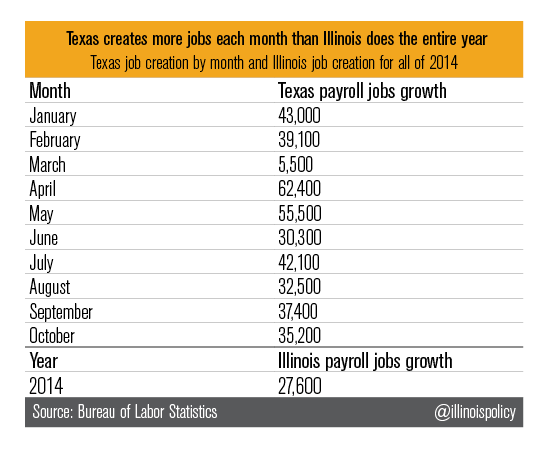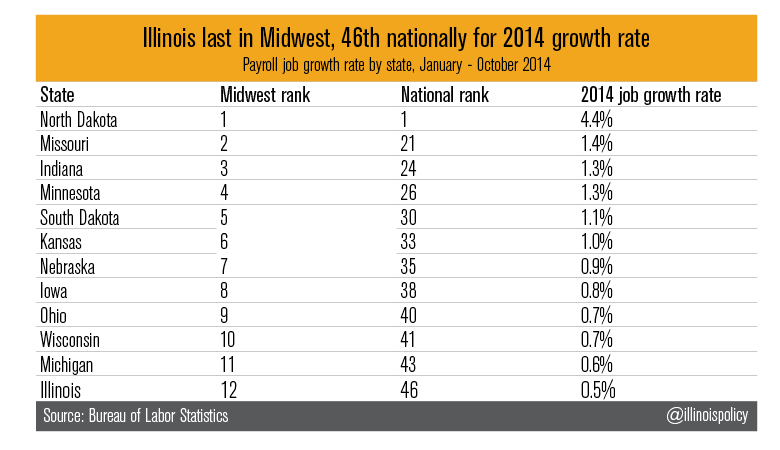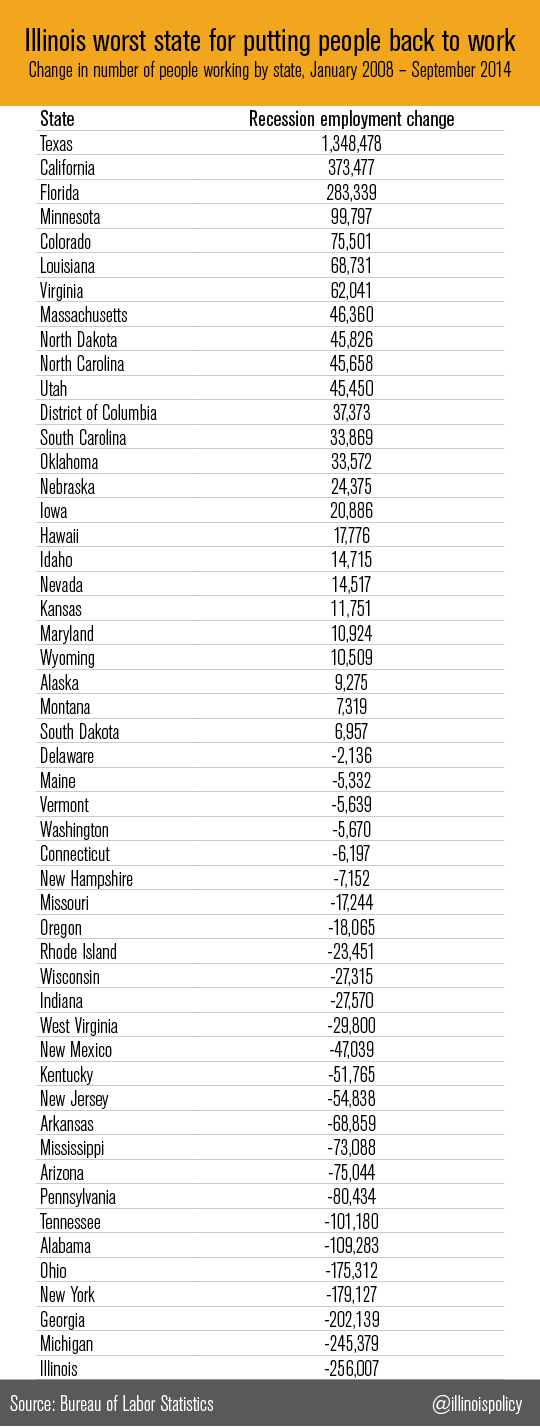Illinois workforce grows, but job creation rate worst in the Midwest
Illinois is now down 138,200 total payroll jobs in the recession era, the second-worst recovery of any state.
The Illinois unemployment rate stayed at 6.6 percent in October, according to an economic release from the Bureau of Labor Statistics on Oct. 21. Payroll jobs in Illinois decreased by 2,000 in October, led by a loss of jobs from public payrolls. For the year, Illinois ranks last in the Midwest for payroll job growth rate.
Illinois’ workforce grew by an impressive 31,800 in October. However, the workforce is still down 19,000 Illinoisans from when 2014 began, and has shrunk by 195,000 people since the effects of the Great Recession began being felt in January 2008. Illinois’ workforce recovery hasn’t even been close to keeping up with the growth of the working-age population. In fact, the recession gap between population growth and workforce growth is still nearly 500,000.
Illinois’ monthly decrease in payroll jobs puts the state’s total jobs gains at 27,600 on the year, marking another year of tepid jobs growth. For context, Texas has created more jobs in nine of the 10 individual months of 2014 than Illinois has created in the entire year.
Illinois continues to have a weak showing on the 2014 jobs tracker. Much smaller Midwest states including Indiana, Missouri, Ohio and Minnesota remain ahead of Illinois, with Indiana leading the Midwest on total jobs gains despite its smaller size.
In terms of 2014 growth rate, Illinois ranks last in the Midwest and 46th of all 50 states plus Washington D.C.
Illinois is now down 138,200 total payroll jobs in the recession era, the second-worst recovery of any state, and only 2,000 jobs ahead of New Jersey.
Despite the strong growth in the number of people working in October, Illinois remains the worst in the country for putting people back to work since the Great Recession. Illinoisans have been slower to get back to work than residents of any other state. Today, there are 256,000 fewer Illinoisans working than there were when the Great Recession began in January 2008.
Anemic jobs growth has been a constant in Illinois for years. Without significant reform, it could very well remain the norm.




